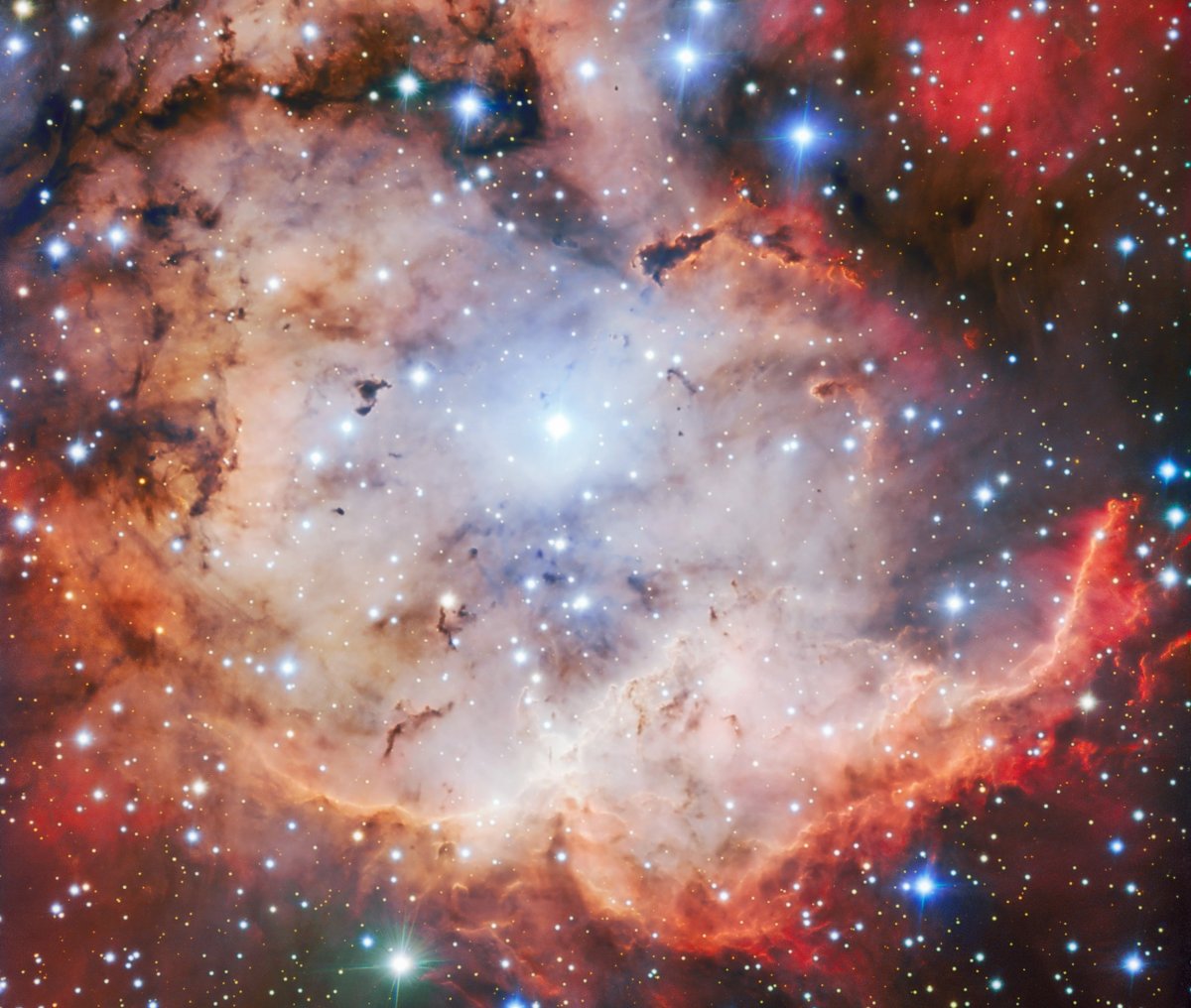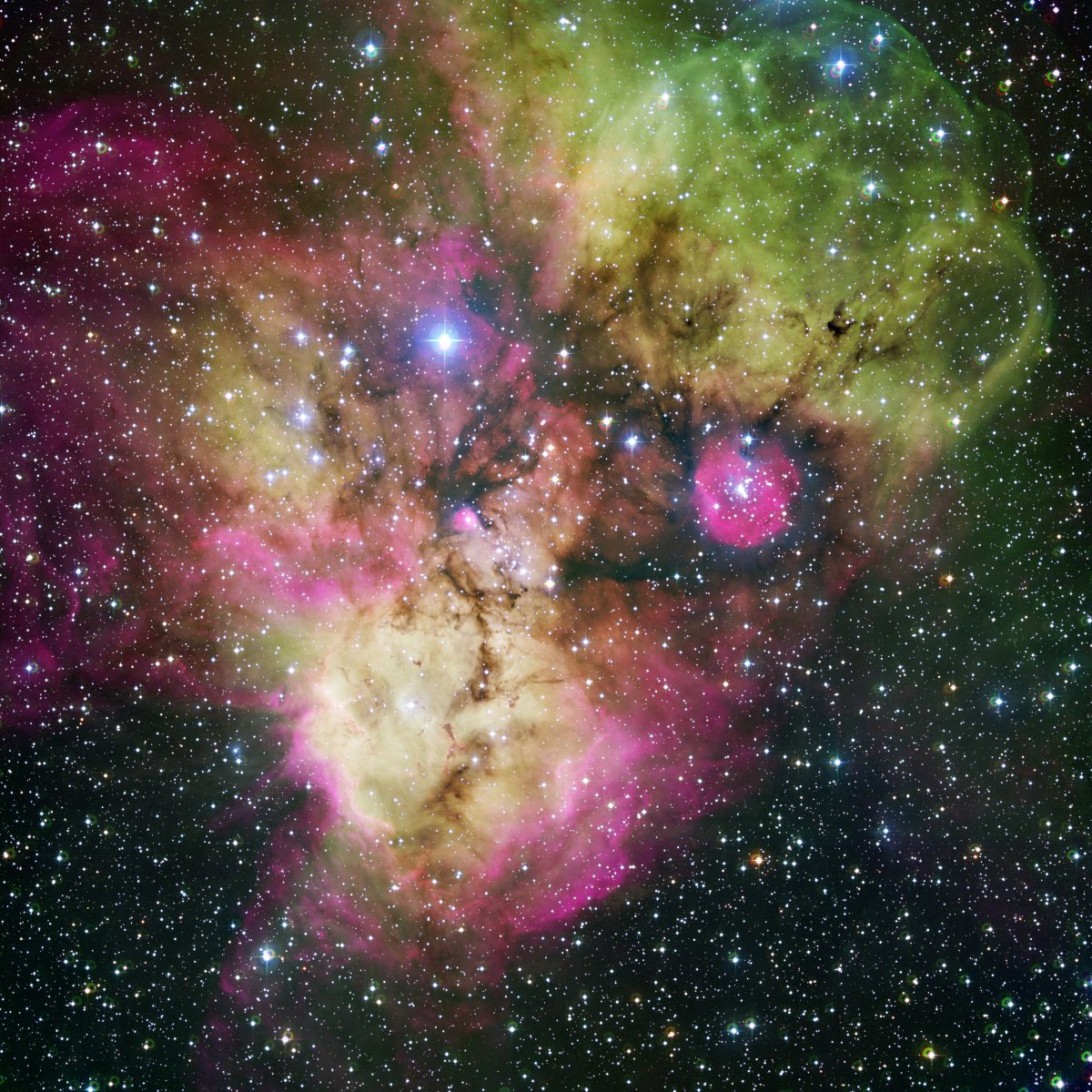As Halloween approaches, astronomers have released an incredible image of an actively star-forming region in the Milky Way called NGC 2467—sometimes referred to as the "Skull and Crossbones Nebula."
The photo was captured by a cutting-edge instrument known as FORS2 on the European Southern Observatory's (ESO) Very Large Telescope (VLT)—the world's most advanced visible-light astronomical observatory located in Chile's Atacama Desert.
NGC 2467—which is not actually a single nebula but a combination of several stellar clusters—got its nickname due to its resemblance to an ominous hollow face, of which only the gaping mouth can be seen in the latest image (directly below).

The scene shows a vast, colorful cloud of gas and dust dotted with numerous bright young stars. An excess of hydrogen in NGC 2467—which is no more than a few million years old at most—provides enough raw material for new stars to be born continuously.
"The nebula is roughly 4,500 light years away and is made out of ionized hydrogen," said a spokesperson for the ESO in comments provided to Newsweek, adding that the size of the region shown in the image is "about 15 light-years across."
The Skull and Crossbones Nebula lies in the southern hemisphere constellation Puppis, which represents the stern of a ship. Puppis was once part of the single, giant Argo Navis constellation named after the vessel used by Jason and the Argonauts from Greek mythology. But due to its enormous size, Argo Navis has since been broken up into three separate constellations: Carina (the keel), Vela (the sails) and Puppis.
The image was captured as part of the ESO Cosmic Gems program, an initiative that makes use of the rare occasions when observing conditions are not suitable for gathering scientific data. Instead of sitting idle in these periods, the ESO's telescopes are utlized to snap images of intriguing or visually attractive objects for the purposes of public outreach and education.

The FORS2 instrument (short for FOcal Reducer and low dispersion Spectrograph 2) is mounted on the Unit Telescope 1 of the VLT array. It is often referred to as the "Swiss army knife" by operators because of its versatility.
The VLT array consists of four Unit Telescopes each with main mirrors measuring 8.2 meters (27 feet) in diameter. These can work together by combining the light beams they detect using a complex system of subterranean mirrors. This enables astronomers to reconstruct images with a resolution that is equivalent to distinguishing the two headlights of a car at the distance of the Moon.
This article has been updated to include additional comments from an ESO spokesperson.
Uncommon Knowledge
Newsweek is committed to challenging conventional wisdom and finding connections in the search for common ground.
Newsweek is committed to challenging conventional wisdom and finding connections in the search for common ground.
About the writer
Aristos is a Newsweek science reporter with the London, U.K., bureau. He reports on science and health topics, including; animal, ... Read more
To read how Newsweek uses AI as a newsroom tool, Click here.








